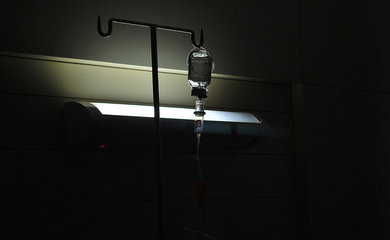The child rights spotlight is firmly on Ireland at the moment. The latest harrowing news is that, in 2013, eighty-three children were placed in adult psychiatric units. The Code of Practice Relating to Admission of Children under the Mental Health Act 2001 explicitly forbids this very thing. This was just the tip of the iceberg of a new report authored by Dr Susan Finnerty, assistant inspector of mental services, which report you can access in PDF format. There were ninety-one such admissions in total, which means some of those eighty-three children were placed with adults more than once during just the course of that year. It’s worth emphasising that several of those children may well have been placed in such inappropriate settings in previous years. It’s also worth noting that, according to Dr Finnerty, this ‘high number of children […] has decreased since 2009’.
Of course, Ireland has been a focus of child rights violations for some time, from sexual assaults committed by Catholic priests, to the deaths of hundreds of children of unmarried mothers in mother and baby homes across several decades. The tenor of this focus has been that such events are in the past, although children are suffering in the present. The Special Rapporteur on Child Protection, Geoffrey Shannon, has criticised the ‘institutionalised poverty’ faced by child asylum seekers. Almost 6500 children are in state care, many of whom have not yet been given appropriate housing, services, or social workers. And then there are the children in adult mental health wards, which are notoriously suspect places for even adult mental health patients.
There is some legal opportunity for admission of children to adult psychiatric units in exceptional circumstances, namely when there are no vacancies in child and adolescent mental health services (CAMHS) or when there are unnamed risk and safety reasons. One wonders about what risk and safety issues there could be that would mean children are not entitled to age-appropriate services, which is certainly a risk and safety issue itself. As it turns out, there were actually vacancies in CAMHS units on the dates of 88 of the 91 admissions to adult units.
Regardless, with the longest admission lasting 142 days, there was clearly time to find appropriate vacancies. Dr Finnerty writes that ‘Thirty-one per cent of children admitted to adult in-patient units were discharged to a CAMHS in-patient unit.’ It’s uncertain what percentage of the remainder were very short term in-patients or otherwise and it is unclear as to the lengths of time each of those children were in adult units before they were moved, although at least twenty one per cent of these admissions were more than ten days long. I know adults who have had horrifying experiences in adult mental health wards; I don’t know how children are expected to endure that kind of vulnerability, particularly for that long.
The report suggests that there should be provisions for emergency CAMHS assessments, because the lack of these might mean that children are by default being placed in adult units when they are admitted over weekends. It’s also going to be vital to keep a watchful eye on the provision of in-patient mental health services, because if these kinds of obvious slips can be this common, they are indicative of further lapses in care that occur in similar situations worldwide. I suggest a broad, systemic look at children’s rights, because children’s rights violations exist not just in isolated pockets in the church or in mental health units, but right across a given national landscape, of which Ireland is just one sore example.
Photo by Harsha K R, licensed under a Creative Commons Attribution-ShareAlike 2.0 Generic license

